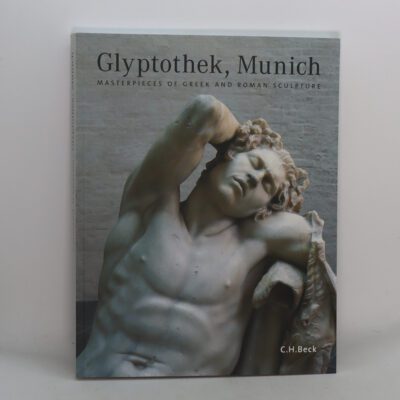Greek and Roman Sculpture in Stone.
By Janet Burnett Grossman
ISBN: 9780892367085
Printed: 2003
Publisher: J Paul Getty Museum. Los Angeles
| Dimensions | 16 × 24 × 1 cm |
|---|---|
| Language |
Language: English
Size (cminches): 16 x 24 x 1
Condition: As new (See explanation of ratings)
Your items
Item information
Description
Softback. Red title and stone sculpture on the cover.
-
F.B.A. provides an in-depth photographic presentation of this item to stimulate your feeling and touch. More traditional book descriptions are immediately available.
Tool marks and joins, Cycladic and Daedalic styles, and kouroi and kanephoroi are among the many terms pertaining to the study of classical stone sculpture that are succinctly described in this latest addition to the “Looking At” series. Presented in glossary format, this illustrated book gives concise definitions of the words and phrases most frequently encountered by museum visitors in exhibition labels and texts. Throughout the book, the author focuses on the technical aspects of sculpting that influenced the style and character of the finished works. An introductory essay underscores the importance of understanding why and how ancient stone sculpture was produced, allowing readers to gain a greater appreciation of the aesthetic value of individual works. Featuring numerous illustrations of ancient stone sculptures, many from the collections of the Getty Museum, “Looking at Greek and Roman Sculpture in Stone” is a useful guide for students, scholars and all who wish to heighten their enjoyment of this classical art.
Review: Janet Burnett Grossman is an antiquities curator at the J.Paul Getty Museum,Los Angeles, and her well-informed, beautifully produced, small book is one of the Museums own publications. It is simply a glossary of classical sculpture with colour photographs illustrating the text. The book contains about 200 terms concisely defined and interestingly explained with about 50% of them having an accompanying photograph that brings to life the text. The photos are mainly sculptures which are part of the high quality collection in the Museum,. However it is important to say that this glossary is applicable to all classical sculpture everywhere, not just to that possessed by the Getty Museum, and whether you are scrambling over ancient temples, visiting galleries and museums, or reading books on ancient stone sculpture… this book will help you to enjoy the experience more, principally by a greater understanding of what one is gazing upon. Examples of words in the glossary are Caryatid, Herm, Kore, Kouros, Sarcophagus, Stele, etc., which are often used semi-mystifyingly by scholars but which are explained in clear language by the author. There are quite a few entries on types of ancient marble, the Carrara, Dolomitic, Naxian, Parian, and Pentelic marbles etc. The techniques and methods of ancient sculptors are also included, such as chisel types, drills, rasps, joints, insertions, gilding, and polychromy. The main famous sculptors are mentioned, Praxiteles, Pheidias, Pausanias, etc. The principal chronological periods and styles are discussed, the Cycladic, Minoan, Daedalic, Archaic, Classical, Hellenistic, etc with the Roman periods of Julio-Claudian, Hadrianic, etc. mentioned in the brief but interesting preface. There are extensive entries on drapery and garment types, the Chiton, Diplax, Stola, Palla, Peplos, Himation, Tebenna, and of course the Toga etc. with a section of beautiful fine drawings at the end of the book on how they were wound round the body, female and male, and posed in the sculptures. The book is not an encyclopedia of ancient sculpture, it is too short for that, but it is a good, useful, and always interesting guide into the sublime world of classical sculpture through the materials, tools, techniques, and human beings who produced them.
Janet Burnett Grossman retired in 2008 after 17 years as a curator in the antiquities department of The J. Paul Getty Museum at the Villa. She continues her study of ancient sculpture with a catalogue of the Greek and Cypriot sculpture in the Getty’s collection which is currently in preparation.
Want to know more about this item?

Share this Page with a friend












